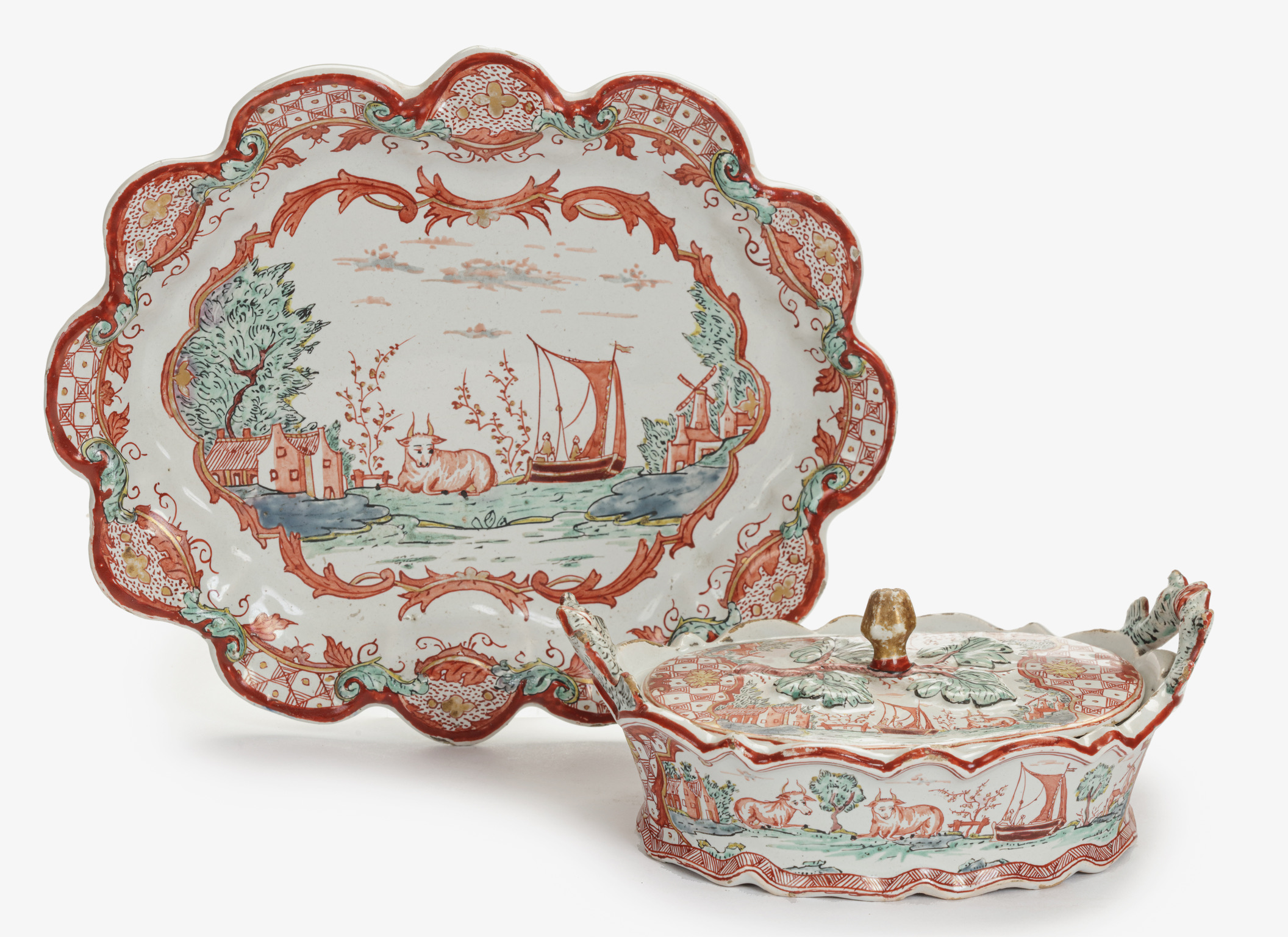![]()
Images on this website are licensed under a
Creative Commons Attribution-NoDerivs 3.0 Unported License.
OBJECT
•D2341. Polychrome Petit Feu and Gilded Butter Tub, Cover and Stand
Delft, circa 1765
Painted in iron-red, salmon, green, blue, yellow and gold on the oval barbed and scalloped edged tureen with two handles each formed as two fish, the sides with a pattern of meander and dot devices and a large flowerhead reserved with two large panels with two recumbent cows in a landscape with buildings, a mill and a sailing boat, repeated on the cover with a single cow on the same meander and dot devices patterned ground reserved with two large flowerheads and the knop emerging from a modeled branch with four leaves, the stand painted in the center with a similar scene of a recumbent cow in a landscape with buildings, a wind mill, a sailing boat flanked by two large trees all within a border of scrolls, the scalloped edged rim with a border of floral leafs and scrolls and panels of meander and dot devices alternated by dots and flowerheads.
DIMENSIONS
Length of stand: 19.9 cm. (7.8 in.)
PROVENANCE
Earle Vandekar, London, according to the original label;
The Collection of Mrs. Ella B. Schaap (1913-2021), author and former Curatorial Associate in the field of European Ceramics at the Philadelphia Museum of Art, Philadelphia, U.S.A.
NOTE
The petit feu firing technique was introduced in Delft in the first half of the eighteenth century to enable pieces to be decorated in fragile enamels, such as shades of pink and heightened in gold. The inspiration was initially taken from Meissen porcelain with chinoiserie decoration. By the 1740s, the taste shifted towards scenes of fashionable European figures in landscapes in the manner of the French painter Jean- Antoine Watteau (1684-1721). This change in taste also coincided with the evolving etiquette of table arrangements and dining. In order to welcome guests to a more lavish and abundant table setting, the shapes and sizes of tablewares grew larger and more elaborate. The evolution of form and decoration of butter tubs and tureens most reflected this important change. Butter dishes were indispensable in Dutch households, where at least one meal a day was cold and based on bread and butter.









